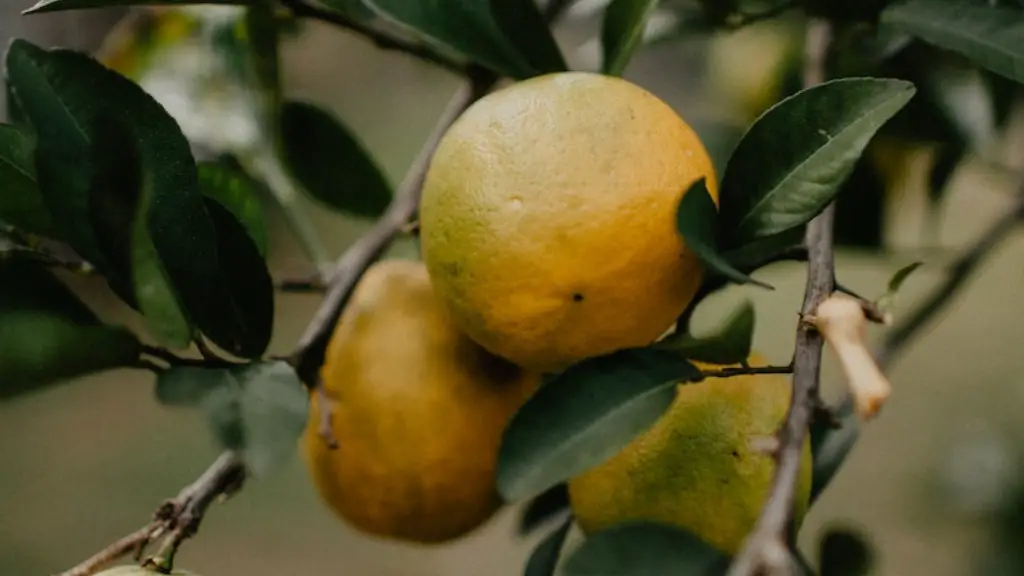Avocados are a popular fruit. They are full of healthy fats, fiber and vitamins, making them an incredibly nutritious addition to your diet. If you’re an avocado lover, you may be interested in growing your own trees. While it can be an exciting, rewarding investment of your time and money, the process of growing avocados to fruit can be tricky. Here are some tips to help get your avocado tree producing fruit.
Select the Right Tree
The key to a healthy avocado tree starts with selecting the best possible variety. There are a few things to consider when selecting your tree:
- The fruiting varieties of avocados are grouped into A, B, and C varieties.
- The A type must be pollinated by a B and vice versa.
- The C type only needs one tree to pollinate.
- Most avocado trees are “alternate bearing”, meaning they only produce heavy crops in alternate years.
Choose a tree that is the right size and shape and is free of diseases. Check with your local nursery to make sure the tree you are buying has been grafted. Grafted trees are stronger, more disease-resistant, and produce larger and more consistent fruit than seedlings.
Choose the Right Location
When planting your tree, be sure to select the right spot. Avocado trees prefer well-drained soils with a pH of 6.0 to 6.5. The tree should be planted in a location that has full sun and protection from wind. The ideal temperature should be around 65 to 85 degrees Fahrenheit. Keep in mind that avocado trees can reach heights of 20 to 40 feet, so be sure to leave enough room for the tree to grow and for you to care for it.
Caring for Your Tree
To get your avocado tree to produce fruit, you will need to care for it properly. Monitor the soil moisture levels and give your tree a deep soaking every couple of weeks to make sure the soil is moist but not soaked. Avocado plants are sensitive to cold weather, so mulch the trunk and surrounding area to help insulate the roots. Fertilize your tree lightly once a month, taking into consideration its specific nutritional needs. Remove dead leaves and branches, and prune any diseased or crossed branch tips.
Pollination and Fruit Set
Many avocado varieties do not produce fruit until they reach a certain size, usually around two feet tall. Once they reach maturity, they are ready to produce fruit. The most important factor in getting your tree to bear fruit is pollination. For type A varieties, you will need a partner tree (type B variety) for successful pollination. For type C varieties, one tree can self-pollinate. Natural pollinators such as bees can help with the process, but more often than not, the pollination process will have to be done by hand.
Spray Practices
Once fruit set has been achieved, certain practices can help increase the yield and quality of fruit. Applying calcium and boron spray on a regular basis will help strengthen the tree and increase yield. Be sure to begin spraying the tree at the fruit bud stage, prior to the blossoming stage, and spray every two weeks. The good news is that once your tree begins to bear fruit, you won’t need to do too much additional work.
Harvesting and Storage Tips
It can take up to 18 months for an avocado tree to produce fruit, so patience is key. When the fruit is fully ripe, it will easily snap off of the tree. Harvesting can be done by hand or with a pole picker. Once the fruit has been harvested, it can be refrigerated for up to a month. For longer storage, the fruit can be frozen or freeze-dried.
Troubleshooting
If you’re having trouble getting your avocado tree to bear fruit, here are a few things you can check out:
- Make sure you have the correct type of avocado tree. A type needs a B type partner and vice versa.
- Ensure proper pollination. Natural pollinators such as bees can help, but the process often has to be done by hand.
- Check for pests and diseases. If the tree is sick, it won’t be able to produce fruit.
- Make sure the tree is planted in the right soil with the right pH.
- Regular pruning and fertilizing can help ensure the optimal health of your tree.
Watering Practices
The amount of water your tree needs depends on its age, the soil it’s planted in, and the local climate. In general, avocado trees need regular watering but should never be overwatered or allowed to dry out. Monitor the soil moisture levels and give your tree a deep soaking every couple of weeks to make sure the soil is moist but not soaked.
Importance of Nutrients
Avocado trees rely on a steady supply of nutrients to produce healthy fruit. Proper nutrition is essential for fruit production, and trees should be fertilized regularly. Choose a fertilizer that is formulated specifically for avocado trees, and apply according to the instructions on the label. Make sure to monitor the soil’s nutrient levels and adjust the amount of fertilizer if needed.
Pruning Practices
Pruning is essential for keeping your avocado tree healthy and productive. Remove any dead or diseased branches, and prune any crossed branch tips. This will help to promote good air circulation and will prevent pests and diseases. Be sure to trim away any new growth that is not producing fruit, as this will draw away energy from the fruit-producing branches.
Environmental Factors
It’s important to be aware of your local climate and the environmental conditions that can affect the growth and yield of your avocado tree. For instance, extreme heat can limit fruit set, and low temperatures can cause leaf burn. Excess wind can cause damage to your tree, so be sure to provide adequate protection from wind and cold temperatures. Also, make sure the tree is planted in an area that receives adequate sunlight.


